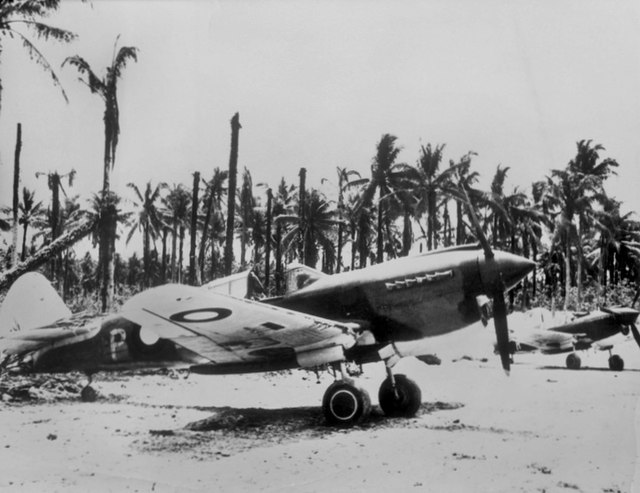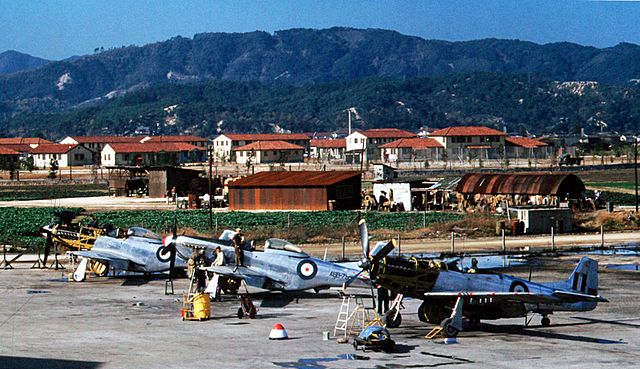No. 91 (Composite) Wing was a Royal Australian Air Force (RAAF) wing that operated during the Korean War and its immediate aftermath. It was established in October 1950 to administer RAAF units deployed in the conflict: No. 77 (Fighter) Squadron, flying North American P-51 Mustangs; No. 30 Communications Flight, flying Austers and Douglas C-47 Dakotas; No. 391 (Base) Squadron; and No. 491 (Maintenance) Squadron. The wing was headquartered at Iwakuni, Japan, as were its subordinate units with the exception of No. 77 Squadron, which was based in Korea and came under the operational control of the United States Fifth Air Force.
Officer Commanding No. 91 Wing, Group Captain Charlton (left), Commanding Officer No. 77 Squadron, Squadron Leader Cresswell (right), and members of No. 30 Communications Unit with Lieutenant General Robertson in South Korea, December 1950
No. 77 Squadron Meteors practise manoeuvres during a training exercise over Iwakuni, Japan, 1952.
Former prisoners of war board a Dakota transport of No. 36 Squadron in Seoul, South Korea, August 1953.
No. 491 Squadron maintenance staff working on a Meteor engine at Iwakuni, June 1954.
No. 77 Squadron is a Royal Australian Air Force (RAAF) squadron headquartered at RAAF Base Williamtown, New South Wales. It is controlled by No. 81 Wing, part of Air Combat Group, and equipped with Lockheed Martin F-35 Lightning II multi-role stealth fighters.
F-35 Lightning of No. 77 Squadron at Guam during Exercise Cope North 22, January 2022
Pilots of B Flight, No. 77 Squadron, including Flying Officer John Gorton (back row, fourth from left) with a P-40 Kittyhawk in the Northern Territory, January 1943
No. 77 Squadron Kittyhawks at Milne Bay, 1943
No. 77 Squadron P-51 Mustang fighters undergoing maintenance at Iwakuni, Japan, c. 1950








